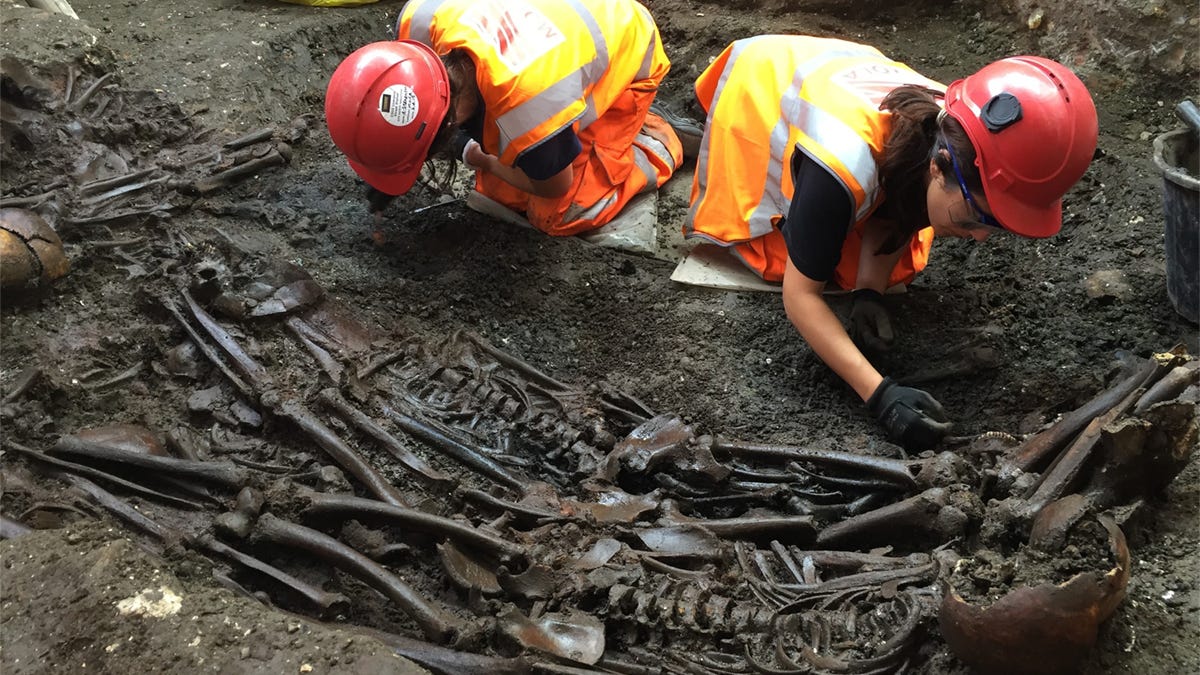Skeleton key: London railway unlocks Great Plague DNA
DNA has confirmed that skeletons found under the site of a future train station in London are from victims of the 1665 Great Plague.
The last time the plague hit England on any sort of scale was 1665. It was nowhere near the scale of the Black Death, but the Great Plague still wiped out some 100,000 people in London over a period of two years, almost a quarter of the population.
However, while there are extant records and accounts of the plague, until now there had been no direct DNA evidence of it.
This new evidence comes from a mass grave uncovered last year, during the construction of a new train station at Liverpool Street in London. Museum of London Archaeology and Crossrail scientists excavated 42 skeletons, as well as fragments of pottery, glass and coffin handles that allowed them to date the site to between 1650 and 1670 -- bang in the middle of the Great Plague.
The site, called the New Churchyard or Bedlam Burial Ground, struggled to accommodate the dramatic rise in burials as the plague surged and peaked. Archaeologists estimate that up to 100 people may have been buried there, with the top of the site just two feet (0.6 metres) from the surface, even though plague burials were supposed to be at least six feet (1.8 metres) under. It was indeed almost full to bursting point.
However, the burials were not conducted without respect. Most of the bodies were placed in coffins, neatly stacked and lined up. As the centuries passed, these coffins decayed and the skeletons collapsed into disarray.
To confirm that the site was indeed a "plague pit," tooth samples from 20 individual skeletons were sent to the Max Planck Institute in Germany. Teeth are ideal for this sort of testing, since the enamel preserves the DNA of bacteria that was present at time of death -- and indeed, five of the skeletons tested positive for Yersinia pestis, the bacteria that causes bubonic plague.
"This is a hugely significant discovery as it is the first identification of ancient DNA from the 1665 Great Plague in Britain," said Don Walker of the MOLA. "This discovery has the potential to greatly enhance scientists' understanding of the disease and coupled with detailed research of the skeletons reveal more about this devastating epidemic and the lives of its victims."
The next steps will be to conduct isotopic analysis to try and determine where the people were born and lived, what they ate and what environmental pollutants and diseases they may have been exposed to. Researchers will also be attempting to sequence the entire genome of the Great Plague's Yersinia pestis.
"This is a very exciting finding, for the history of London, the history of disease, and the history of burial," said the University of London's Vanessa Harding.
"It confirms that Yersinia pestis was present in early modern London plague epidemics, and links them epidemiologically with the 14th-Century Black Death and the 1720 Marseille plague. We still need, however, to understand why the disease manifested itself in so many different ways, and whether other pathogens made a significant contribution to these epidemics."


